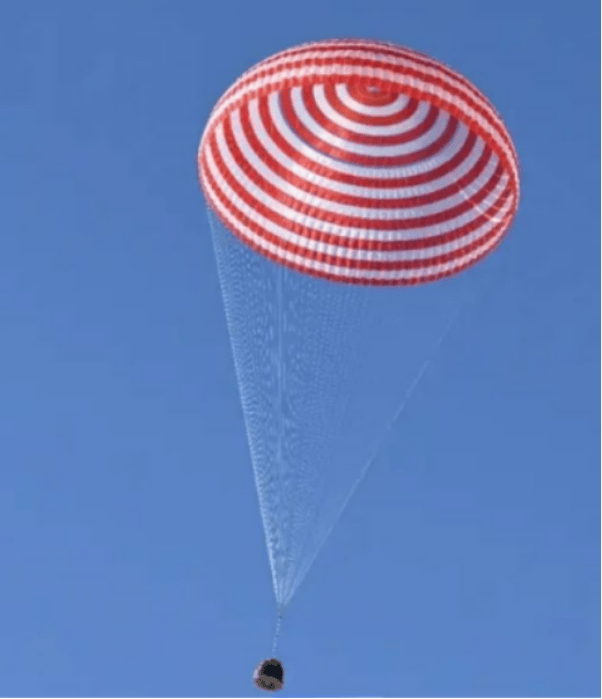Spacecraft Drop Simulation Test Using RE-Series DAQ
I. Project Background and Objectives
In September 2024, a Beijing aerospace research institute conducted a high-altitude simulated drop test using the RE-Series Rugged Data Acquisition System to validate the reliability of the spacecraft recovery system. The test aimed to capture structural strain and vibration response data during parachute deployment and landing impact, evaluating the shock resistance of buffer mechanisms and structural components to support design optimization.
II. Test System and Solution Design
1. Sensor Arrangement
Strain Points: 20+ strain rosettes and unidirectional strain gauges deployed on critical load-bearing structures (e.g., brackets, buffer connection points) to measure multi-directional stress distribution.
Vibration Points: 10 triaxial accelerometers installed in core areas of the cabin to capture vibration magnitude and spectral characteristics during parachute deployment and landing impact.
2. Data Acquisition System
Core Equipment: RE-Series rugged data acquisition system supporting 32-channel synchronous acquisition with a maximum sampling rate of 51.2 kS/s.
Shock-Resistant Design: Compliant with MIL-STD-810G military standard,耐受ing instantaneous shocks up to 10,000g and extreme temperatures.
Offline Recording Mode: Built-in large-capacity solid-state storage ensured complete data recording throughout the drop process, avoiding reliability risks associated with wireless transmission.
3. Test Process
The test cabin was dropped freely from a 50-meter height to simulate real recovery conditions.
The acquisition system was triggered synchronously to continuously record data during parachute deployment (deceleration shock) and landing (impact shock).
Data was rapidly retrieved via Gigabit Ethernet post-test for offline analysis.
III. Test Results and Data Analysis
1. Parachute Deployment Phase Data
Shock Acceleration: Longitudinal shock reached 15g during parachute deployment, lasting 80ms.
Strain Response: Peak strain at buffer connection points was 800με, below the material yield limit.
Spectral Characteristics: Vibration energy concentrated in 20-100Hz, consistent with design expectations.
2. Landing Phase Data
Impact Acceleration: Peak landing impact reached 35g, with lateral components <5g.
Structural Strain: Uniform strain distribution at the cabin bottom, with the maximum stress point at landing feet (1200με).
Energy Absorption: The buffer mechanism effectively absorbed 80% of the impact energy, with strain data validating its design reliability.
3. Engineering Value
Identified a risk of resonance between parachute shock frequency and the natural frequency of an electronic device, mitigated by improving mounting brackets.
Landing strain data supported lightweight design optimization, reducing weight by 15% while maintaining structural strength.
IV. Core Advantages of the RE-Series System
1. Extreme Environment Adaptability
Operating temperature range: -40°C to 85°C; IP67 dust/water resistance, suitable for harsh outdoor test sites.
Power-off data protection mechanism ensured zero data loss during sudden impacts.
2. High Synchronization Precision
Channel synchronization deviation <0.1°, enabling precise correlation between strain and vibration phase information.
Support for TEDS sensor auto-recognition, completing all point configurations within 30 minutes.
3. Efficient Data Analysis
Built-in software automatically generated shock response spectra (SRS) and strain cloud maps.
Exported test reports compliant with ASTM E290 and NASA-STD-5000 standards.
V. Customer Benefits
Reliability Validation: Precisely captured transient shock data, proving the recovery system met crewed spaceflight safety requirements.
Cost Optimization: Data-driven design improvements reduced physical test iterations, saving 30%+ R&D costs.
Technology Reserve: Established a spacecraft drop test database to support landing technology research for future deep-space exploration missions.
VI. Application Expansion
This solution applies to:
Drop tests for returnable satellites and crewed spacecraft recovery cabins;
Crashworthiness evaluations for UAVs and missiles;
Military electronic equipment shock resistance certification in field environments.

